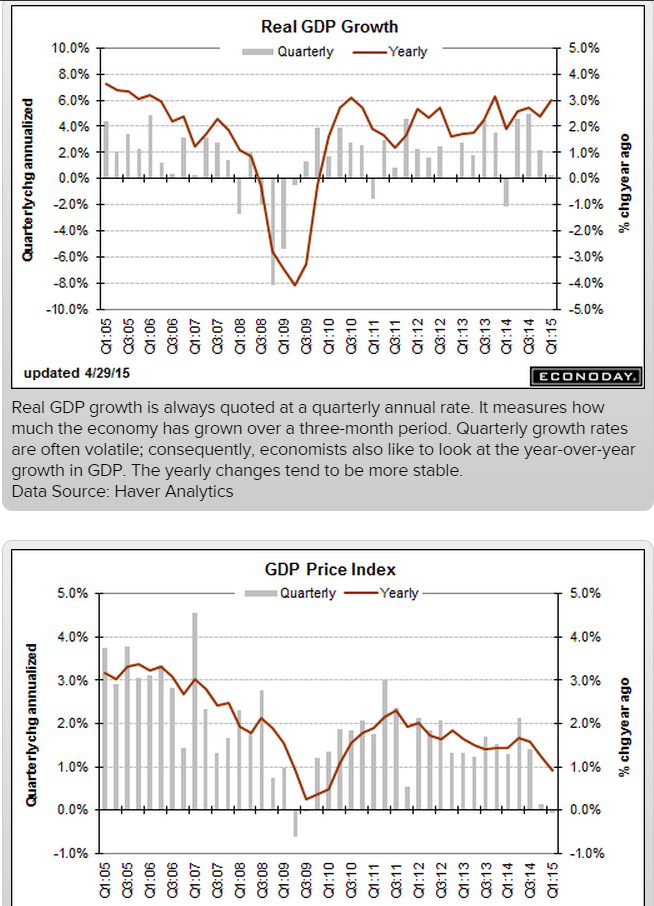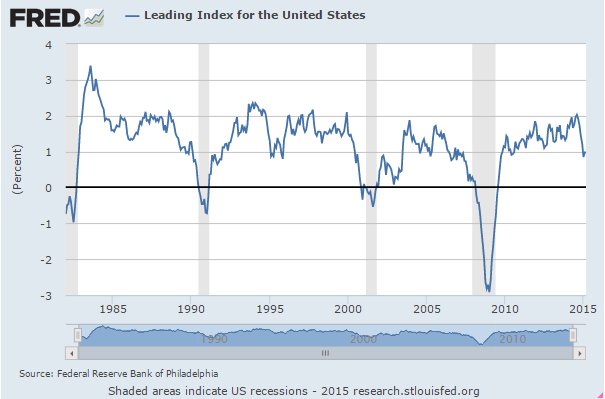MBA Mortgage Applications
Highlights
Up 4 of the prior 5 weeks, the purchase index was unable to add new ground in the April 24 week and was unchanged. The refinance index remains soft, down 4.0 percent. Rates are very low but mostly ticked higher in the week with the average 30-year fixed mortgage for conforming balances ($417,000 or less) up 2 basis points to 3.85 percent.
Almost 0 and below expectations even with the low deflator, also below expectations which tends to help GDP near term. This is not good, and it’s inline with the Atlanta Fed’s forecast which has been largely ignored by the cheerleaders. And surprise, looks like the drop in the price of oil was an unambiguous negative:
BEA Release
Real gross domestic product — the value of the production of goods and services in the United States, adjusted for price changes — increased at an annual rate of 0.2 percent in the first quarter of 2015, according to the “advance” estimate released by the Bureau of Economic Analysis. In the fourth quarter, real GDP increased 2.2 percent.
The increase in real GDP in the first quarter primarily reflected positive contributions from personal consumption expenditures (PCE) and private inventory investment that were partly offset by negative contributions from exports, nonresidential fixed investment, and state and local government spending. Imports, which are a subtraction in the calculation of GDP, increased.
The deceleration in real GDP growth in the first quarter reflected a deceleration in PCE, downturns in exports, in nonresidential fixed investment, and in state and local government spending, and a deceleration in residential fixed investment that were partly offset by a deceleration in imports and upturns in private inventory investment and in federal government spending.
The price index for gross domestic purchases, which measures prices paid by U.S. residents, decreased 1.5 percent in the first quarter, compared with a decrease of 0.1 percent in the fourth. Excluding food and energy prices, the price index for gross domestic purchases increased 0.3 percent, compared with an increase of 0.7 percent.
Real personal consumption expenditures increased 1.9 percent in the first quarter, compared with an increase of 4.4 percent in the fourth.
The easy comp. with last year’s weather dip helps the year over year increase:







